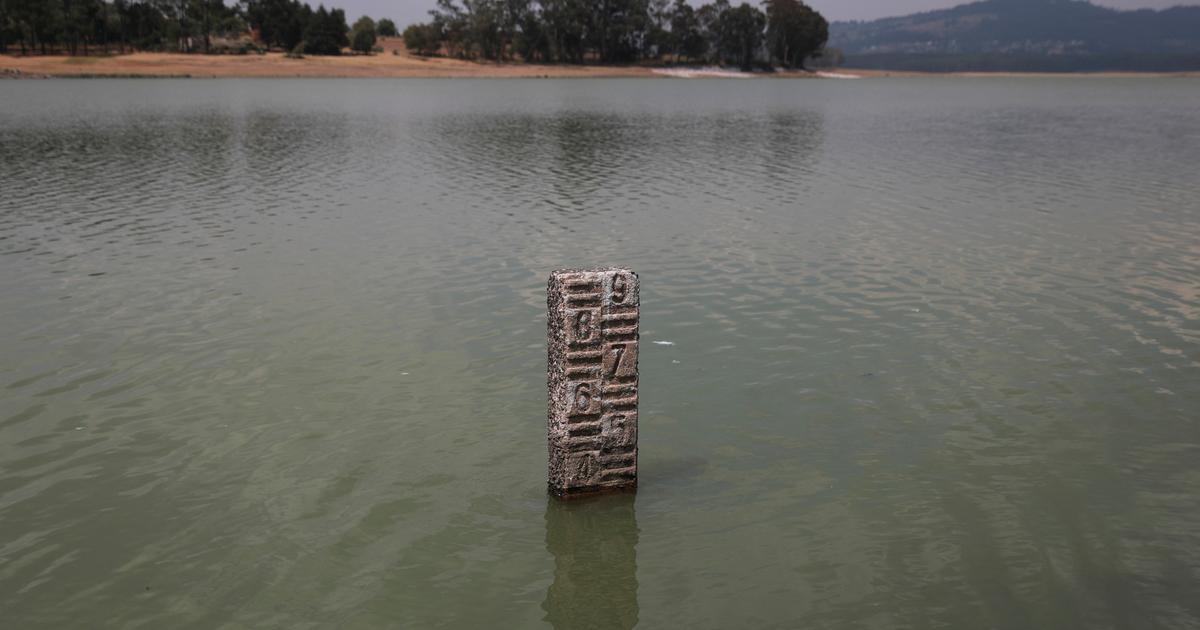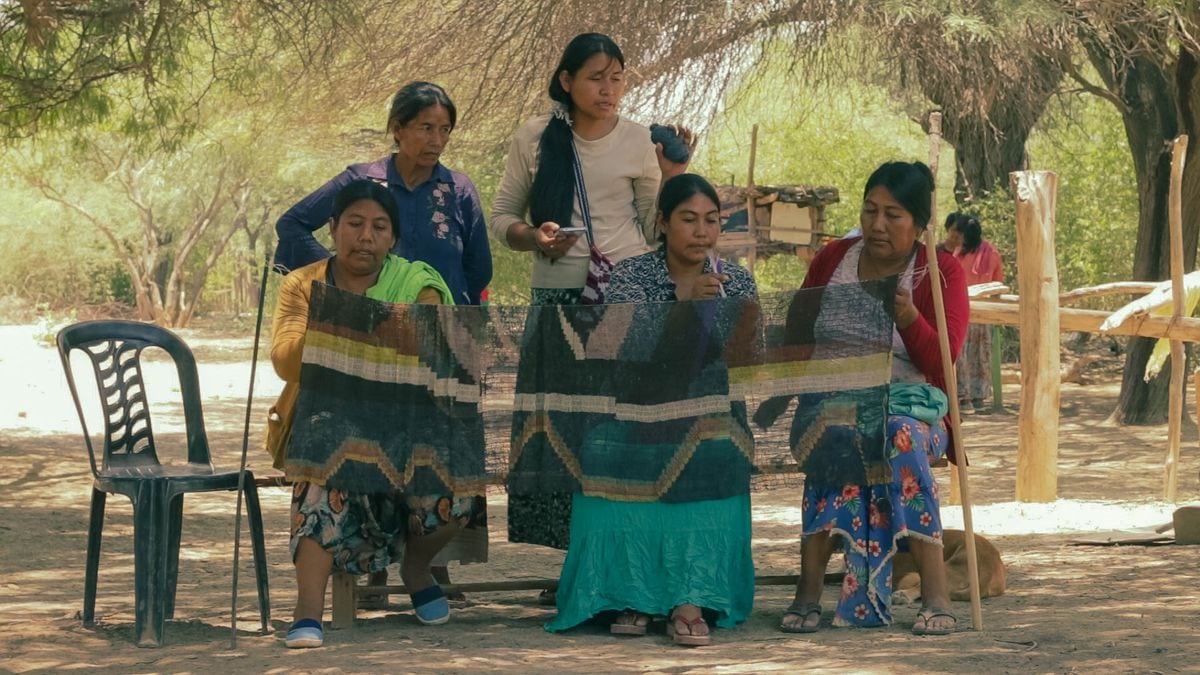This is the project that brings water to a semi-arid area of Mexico 6:31
(CNN Spanish) -
More than 40 years ago, when they were two young newlyweds, Raúl Hernández and Gisela Herrerías left for the Mixtec Popoloca region of Mexico, located in the mountain range that divides Puebla and Oaxaca and undertook a mission that would change the the lives of hundreds of thousands of people around them: ensuring access to water through the regeneration of depleted basins, with a method that combines indigenous techniques with modern technology.
"When we got here, this was a totally semi-arid area, with small desert area vegetation, which instead of providing shade is pitiful. And with this we decided to start working. We had to stop the water," Hernández told CNN. remember the beginnings of his work in an area where the rains are seasonal and the soils are poor.
Access to water is a great challenge throughout Mexico: it is one of the 25 countries with the highest water stress, according to the World Resources Institute, and between 12.5 and 15 million inhabitants still do not have access to drinking water, according to the UNAM.
Research recently published in
Nature
further revealed that 50 million face perennial or seasonal water shortages in urban areas.
Raúl Hernández and Gisela Herrerías have worked for decades in the Mixtec-Popoloca region of Mexico.
Hernández and Herrerías took the task on their shoulders and founded the project "Agua para siempre", which has improved lives in this mountain range that connects Puebla and Oaxaca and has launched an educational project recognized by Unesco.
'Taming the water'
The "Water for ever" program aims to preserve rainwater so that the population can use it, both for consumption and for agriculture.
advertising
What they do is "tame" the water that runs off the upper parts of the territory "by making small checkpoints along the entire channel to make the water slowly descend and infiltrate," Herrerías told CNN.
"When it rains and the water runs off, it starts to go down and it goes down, it goes down destroying, carrying soil, carrying trees. So the important thing is to stop that force of the water with these retainers so that the water loses strength and is a benefit," he explains .
To achieve this, stone terraces are built in the higher parts, explains the organization on its website, which are reinforced with living barriers and help rainwater to infiltrate the soil.
In the channels, meanwhile, gabion dams are built that retain materials such as sand and stones that carry the current, which reduces erosion.
The water seeps through these banks and moves towards storage dams, which they call "water pots."
The "Water forever" works have benefited more than 250,000 people.
In the process, the water is purified naturally, making it fit for human consumption.
"The main benefit is having water for human consumption and a surplus to cultivate their small plots, the different crops that are grown annually", explains engineer Gerardo Reyes, Engineering Director of "Agua para siempre".
In the villages, meanwhile, digesters are being built to collect and treat sewage, a solution that does not require wastewater treatment plants or high-cost drainage systems.
For the program to work, the commitment of the peoples who are 'upstream' is essential: if they direct the drainage of their homes to the riverbed, for example, the contaminated water will reach the villages that are in low-lying territories, therefore that the success of the project depends on the involvement of the entire region.
The water serves to recharge the aquifers, revitalizes the wells, serves for homes, for agriculture and as a trough for livestock.
And it has completely transformed the region.
The 'miracle of collaboration'
In a semi-arid region, where there were, in Hernández's words, "pure little bushes", you can now see leafy trees and insects and birds a "wonderful microclimate, conducive to biodiversity." "This is where we feel what the magic of reforestation is," he explains, but more than magic, it is about the "miracle of the collaboration of people of good will with nature."
"Nature has been attacked for decades, centuries, but if there are groups, small groups of people who organize and understand that we must take care of the soil, that we must take care of the vegetation, that we must retain and treasure water as the more valuable, immediately little plants start to sprout everywhere. Insects start to arrive, little birds start to arrive, all the biodiversity in their environment begins to reproduce, "he explains.
Ancestral wisdom
The "Water forever" proposal has its roots in the work of the ancient Mexicans who populated the Tehuacán Valley and the Mixtec region: they were the ones who invented the terraces, canals and dams to be able to benefit from the water and take advantage of the soils and vegetation.
The project has combined those methods with modern technology and, so far, has carried out 11,600 works to benefit 275,000 people, according to Hernández.
The work of "Water Forever" applies modern technology to ancient systems.
Hernández has a degree in Philosophy from the Universidad Iberoamericana y Herrerías, pedagogue.
This project has the participation of experts in Engineering and also with the involvement of the entire community, which is one of the keys.
An opportunity not to abandon the roots
"Water forever" can also be seen as a bet to provide young people with development opportunities in the region where they grew up, avoiding that they have to migrate in search of alternatives. "When in a rural society there are no conditions for the life of the family and the people to be reproduced, then people migrate, they migrate looking for employment, but they also migrate looking for new alternatives, new options to make a better life," he explains. Hernandez.
"If the program 'Agua para siempre' manages to improve the conditions of the house and production, then suddenly the young people say 'There are already life options here in my town and I no longer have to emigrate,'" he says.
There are young people who continue to leave the region, he explains, in some cases for several months to work abroad, but they are no longer considered migrants who leave their villages permanently, but temporary workers who have a place to return to.
The Water Museum, a window to the world
In addition to the works that have changed the lives of thousands of people, Hernández and Herrerías launched the Water Museum, a window to the world of work of ancestral peoples and current communities.
The museum was not in their plans, explains Hernández. It arose in response to the demand of those who visited the area, who wanted to understand the work they were doing. They began to take photographs, to enlarge them, to rent spaces to exhibit them and over time the word spread and more and more people interested in knowing their work began to arrive. The result of the process was the inauguration of a large educational space that is located on the highway that connects Tehuacán with Oaxaca and that has received visitors from all corners of Mexico and 21 countries.
In the museum, which occupies more than 20 hectares, you can see the techniques developed by the Mesoamerican indigenous people to obtain and conserve pure water that served them both for their consumption and for the cultivation of the cornfield. And it also shows how modern works are for the preservation and purification of water, how the watershed regeneration system works. There, "we are relearning what the ancestors did," Hernández explains, and "applying modern engineering and modern materials to make it faster, more efficient, and with greater scope."
The museum not only allows a vision towards history, says Hernández, but it is "a vision towards the territory, to understand the management of the basin in which all the hydrometeorological phenomena occur to learn to take advantage of the soil, take care of the plants to that there is water and that it is not contaminated ".
The museum work did not stop there.
In 2017, Hernández says, Unesco asked them to convene the formation of a global network of Water Museums that currently has about 60 centers around the world, from South Korea to the United Kingdom, passing through India, Burkina. Faso and Ecuador.
This space has received, according to Hernández, an average of 1,000 visitors a month since 2005 (during the pandemic the tours were suspended).
But in addition to knowing the history and understanding how the works work, 255,000 people have participated in training, courses or consultancies there.
A bet of life with an eye on the young
The contribution of "Agua para siempre" has its sights set on young people, Hernández explains, at a time when they are bombarded by the multiple crises on our planet: fires, floods, droughts, threats.
"When they come to a place like this, for example, people who come from far away, from much greener places, with much more water, they are surprised and say 'and how could they have achieved this in this place?'
If they could do this, we will be able to do much more. "
"Gisela and I bet our lives on a question, before a question: is it possible to change people's lives if we commit ourselves as young people to work with them or not? Is the world so terrible that no matter how hard you try Won't you be able to change it? ", says Hernández.
And your answer to these two questions is very hopeful.
"Now, after 40 years, we like to welcome young people, give them hope and say 'look, all this is proof that if you make an ethical choice of service to others, a work option caring for nature and an option of ecological regeneration with a vision of the future, you will be able to transform the world into something much more fertile and a more humane place to live. "


/cloudfront-eu-central-1.images.arcpublishing.com/prisa/PGFLWZYGBFG7FBITHUY7ILSNBQ.jpg)
/cloudfront-eu-central-1.images.arcpublishing.com/prisa/DNL7HO6Q7JEGXAADDZOU7HVF2I.jpg)





